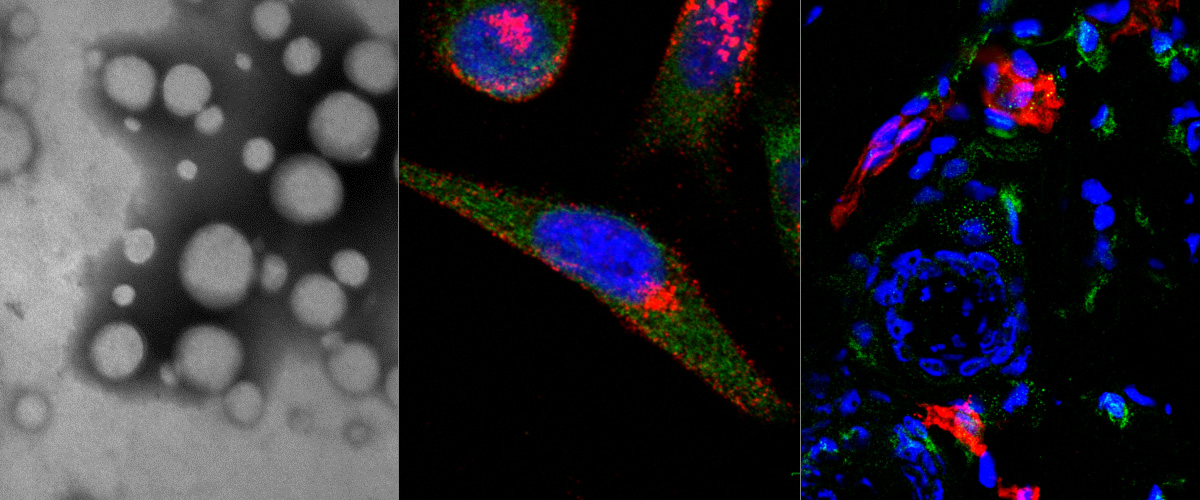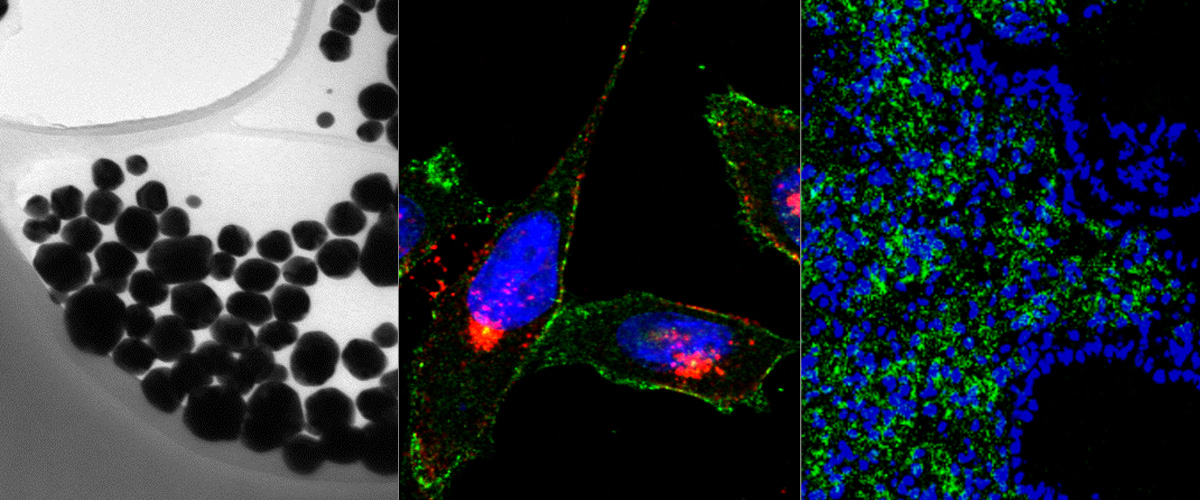Project: EMP181 Targeting glioma stem-like cells with tumor penetrating peptides.
Project Promoter: University of Tartu, prof Tambet TeesaluProject Partner: University of Bergen, prof Rolf Bjerkvig
Project duration: 01.09.2014 - 31.12.2016
Original summary:
Our project combines the expertise of the laboratory of Prof. Rolf Bjerkvig (the state of the art, clinically relevant human GBM models) and the laboratory of Dr. Tambet Teesalu (targeted drug delivery technologies), to develop tumor penetrating peptides that target GBM. We will develop peptides that deliver payloads to infiltrative glioma stem cell-like cells by in vivo peptide phage display on advanced glioma animal models. Specifically, we will use a high-throughput DNA sequencing and bioinformatics analysis to identify peptides that home to glioma lesions and are capable of reaching the infiltrating tumor stem-like cells. We will perform mechanistic studies on peptide receptors and tissue penetration mechanisms. The peptides that we will develop are able to penetrate gliomas (and potentially other tumors) independent of their angiogenic status, and to deliver co-administered drugs to tumor propagating cells far from the bulk glioma lesion. We will characterize, validate, and optimize the tumor penetrating peptide platform for enhanced delivery of chemically conjugated and co-injected drugs. The peptides will be coupled to therapeutic payloads (low molecular-weight drug temozolomide and a therapeutic antibody) to achieve selective elimination of the malignant cells for sustained therapeutic response.
The peptides that we will develop will provide an angiogenesis-independent paradigm of tumor stem cell targeting that can be potentially applied to other types of solid tumors. As the drug does not have to be conjugated to the peptide, once a peptide has been clinically validated, it can be used to augment the efficacy of any imaging agent or anti-cancer drug - a major advance in glioma therapy could ensue.
Project status February 15, 2016
We used a high-throughput DNA sequencing and bioinformatics analysis to identify peptides that home to glioma lesions and are capable of reaching the infiltrating tumor stem-like cells. We went on to demonstrate that a synthetic tumor homing peptide, TT1, homes robustly and specifically to the glioma lesions. TT1 is a tumor penetrating peptide that targets cell-surface p32 protein that is upregulated in glioma in angiogenesis-independent manner. We have demonstrated that TT1 peptide can be used for glioma-selective delivery of nanoparticle payloads, such as iron oxide nanoworms. We are currently validating the TT1-based platform for enhanced delivery of chemically conjugated and co-administered drugs. TT1 and other peptides developed with support of this grant will allow achieving selective elimination of the malignant cells for sustained therapeutic response.
Publications acknowledging EMP181:
- Rab11 and Lysotracker Markers Reveal Correlation between Endosomal Pathways and Transfection Efficiency of Surface-Functionalized Cationic Liposome-DNA Nanoparticles.Majzoub RN, Wonder E, Ewert KK, Kotamraju VR, Teesalu T, Safinya CR. J Phys Chem B. 2016 Jul 7;120(26):6439-53. doi: 10.1021/acs.jpcb.6b04441.https://www.ncbi.nlm.nih.gov/pubmed/27203598
- Urokinase-controlled tumor penetrating peptide. Braun GB, Sugahara KN, Yu OM, Kotamraju VR, Mölder T, Lowy AM, Ruoslahti E, Teesalu T.J Control Release. 2016 Jun 28;232:188-95. doi: 10.1016/j.jconrel.2016.04.027. https://www.ncbi.nlm.nih.gov/pubmed/27106816
- New p32/gC1qR Ligands for Targeted Tumor Drug Delivery. Paasonen L, Sharma S, Braun GB, Kotamraju VR, Chung TD, She ZG, Sugahara KN, Yliperttula M, Wu B, Pellecchia M, Ruoslahti E, Teesalu T. Chembiochem. 2016 Apr 1;17(7):570-5. doi: 10.1002/cbic.201500564. https://www.ncbi.nlm.nih.gov/pubmed/26895508
- Synthesis of linear and cyclic peptide-PEG-lipids for stabilization and targeting of cationic liposome-DNA complexes. Ewert KK, Kotamraju VR, Majzoub RN, Steffes VM, Wonder EA, Teesalu T, Ruoslahti E, Safinya CR. Bioorg Med Chem Lett. 2016 Mar 15;26(6):1618-23. doi: 10.1016/j.bmcl.2016.01.079. https://www.ncbi.nlm.nih.gov/pubmed/26874401
- Targeted silver nanoparticles for ratiometric cell phenotyping. Willmore AM, Simón-Gracia L, Toome K, Paiste P, Kotamraju VR, Mölder T, Sugahara KN, Ruoslahti E, Braun GB, Teesalu T. Nanoscale. 2016 Apr 28;8(17):9096-101. doi: 10.1039/c5nr07928d. http://www.ncbi.nlm.nih.gov/pubmed/26646247





